Germans were evicted from all the lands east of the Oder and from the Sudetenland. Germany lay in rubble with no government and scarcely any economy. Hitler’s dreams of world dominance and Lebensraum had collapsed. Only the generosity of their former enemies in providing food and fuel kept the German population alive that summer and bitter winter of 1945–1946.
But the most terrible, costly war in history had ended. The world had finally rid itself of Hitler, Nazism, and the Third Reich.
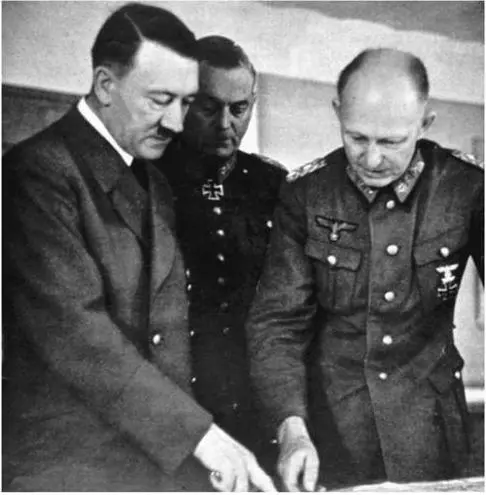
Adolf Hitler (left) confers with Field Marshal Wilhelm Keitel and General Alfred Jodl. Keitel was chief of staff of the Oberkommando der Wehrmacht (OKW), or armed forces supreme command, while Jodl was OKW chief of operations. Keitel was a toady to Hitler, but Jodl gave Hitler limited advice, though he never dared clash with the Fuehrer. (Topham/ The Image Works)
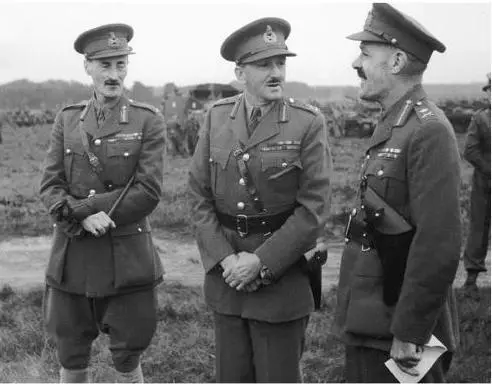
Field Marshal Sir Alan Brooke (center) , chief of the British Imperial General Staff, with Lieutenant Generals Laurence Carr (left) and Sir G. le Q. Martel. (Topham/The Image Works)
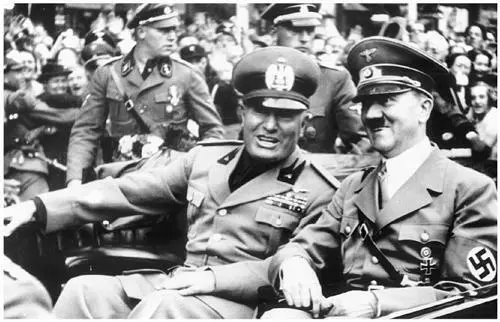
Italian dictator Benito Mussolini (left) and Adolf Hitler in a motorcade in Berlin. (Topham/ The Image Works)
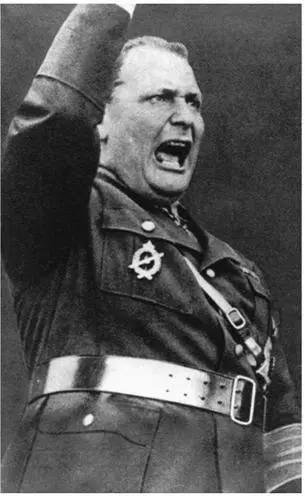
Hermann Göring, chief of the German Luftwaffe, or air force, and a crony of Hitler. (Topham/The Image Works)
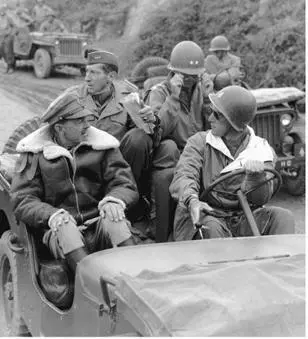
British General Sir Harold Alexander, Allied commander in Tunisia and Italy (in front seat) , with American Lieutenant General Mark Clark, 5th Army commander (in back seat, left), and Major General John Coulter. (Topham/The Image Works)
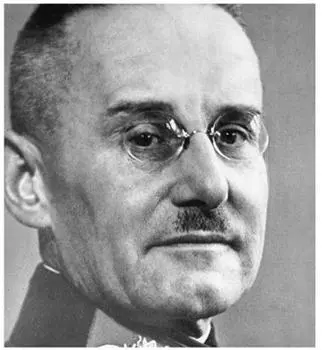
General Franz Halder, chief of staff of the German army since 1938, persisted in pointing out the dangers of dividing German forces between Stalingrad and the Caucasus. Hitler paid no attention and removed him on September 15, 1942. (AP/Wide World Photo)
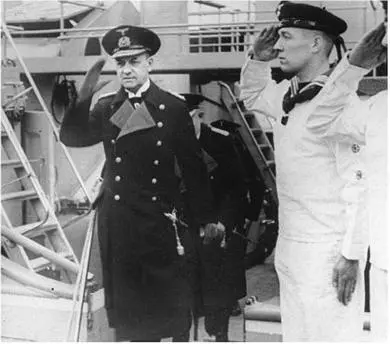
Grand Admiral Erich Raeder (left), chief of the German navy, leaves a vessel after an inspection in December 1939. Raeder tried repeatedly to convince Hitler to commit enough German forces to seize Egypt, the Suez Canal, and the Middle East, but Hitler refused and continued with his fixation on destroying the Soviet Union by a direct attack. Hitler removed Raeder early in 1943. (AP/Wide World Photo)
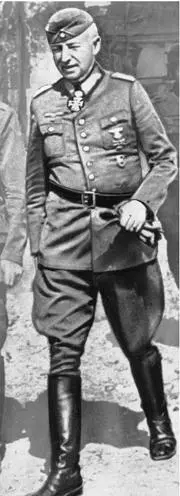
Field Marshal Erich von Manstein conceived the plan that defeated France in six weeks in 1940 and carried out withdrawals that saved the southern wing of the German army in Russia early in 1943 after Hitler’s disastrous decision to sacrifice the 6th Army at Stalingrad. (AP/Wide World Photo)
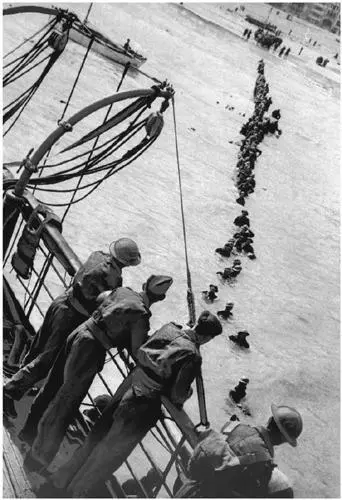
British soldiers form a human chain to wade through the surf during the evacuation of Dunkirk, France, in June 1940. The British mobilized every vessel they could find, from private yachts to warships, to rescue 338,000 beleaguered British and French troops, cut off by the German thrust through the Ardennes to the English Channel. (AP/Wide World Photo)
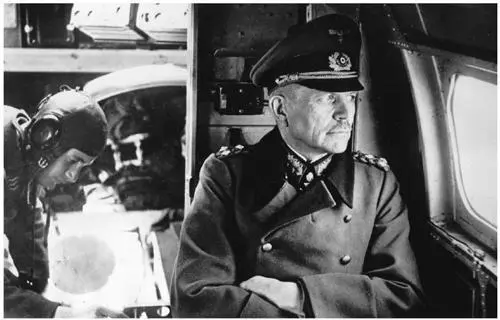
General Heinz Guderian in his command vehicle. Guderian was father of the German panzer, or armored, divisions; he led the breakout through the Ardennes to the English Channel in May 1940 and directed the main panzer thrust at Moscow in the fall of 1941. (Topham/The Image Works)
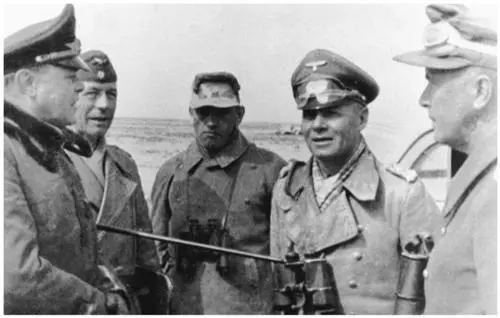
The major German commanders in Africa in 1941 (from left): Field Marshal Albert Kesselring, German chief in the Mediterranean; Major General Stefan Froehlich, Luftwaffe commander in Africa; Lieutenant General Alfred Gause, Rommel’s chief of staff; General Erwin Rommel, field commander; and Lieutenant General Ludwig Cruewell, chief of Africa Corps. (Topham/ The Image Works)
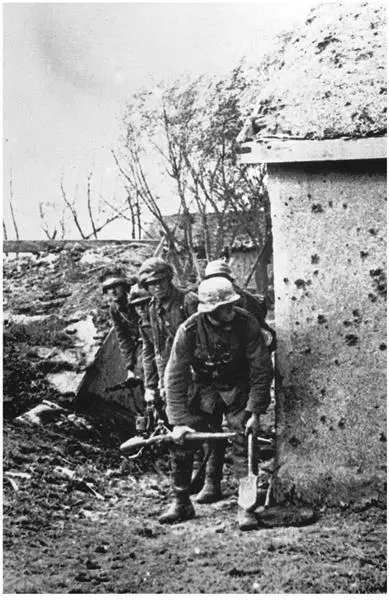
German soldiers crouch behind a bullet-pocked wall during fighting in the Crimea in November 1941. (AP/Wide World Photo)
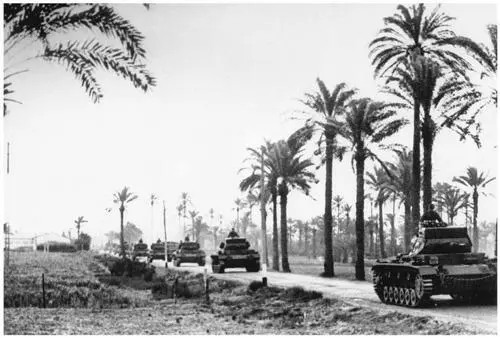
German panzers roll through Libya toward the battlefront on the Egyptian frontier in April 1941. The German commander, Erwin Rommel, was preparing for a British offensive there around Sollum and Halfaya Pass. (AP/Wide World Photo)
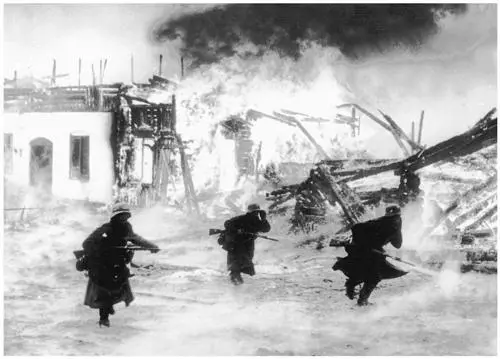
German troops rush through a burning Russian village in the early stages of the invasion in June 1941. (Topham/The Image Works)
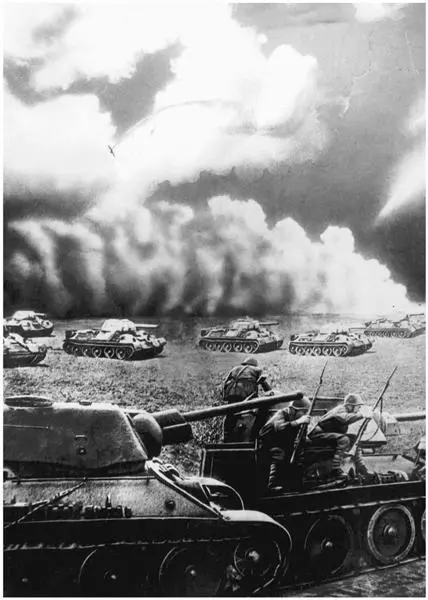
Soviet T-34 tanks advancing into action. The T-34, with good speed, sloping thick armor that could deflect many shells, wide tracks that could move well in mud or snow, and a high-velocity 76-millimeter cannon, was the most successful tank in World War II. Panzer leader Heinz Guderian attributed the collapse of the German attack on Moscow in December 1941 to the T-34. Later the Soviets mounted an even more powerful 85-millimeter gun on the tank. (Topham/The Image Works)
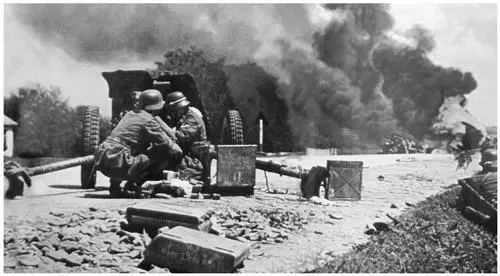
A German antitank gun crew in action in Russia in the summer of 1942. German armored forces could generally outmaneuver Soviet defenders because German organization and leadership were normally superior. This allowed German panzers to make astonishing advances despite heavy opposition. Adolf Hitler forfeited this great advantage of maneuverability by requiring German forces to fight a close-in, street-by-street battle in Stalingrad and by demanding that Germans defend every inch of the territory they occupied. (Topham/The Image Works)
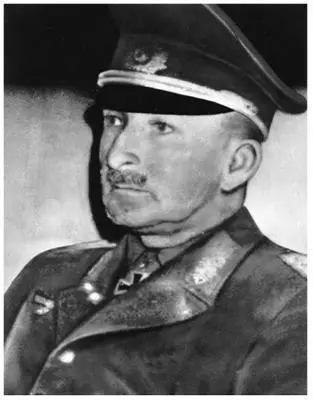
General Hans-Jürgen von Arnim, commanding the German 5th Panzer Army in Tunisia, was envious of Erwin Rommel’s fame and withheld forces Rommel might have used to sweep behind the Allied armies and force their surrender or retreat in the battle of Kasserine Pass in February 1943. (Topham/The Image Works)
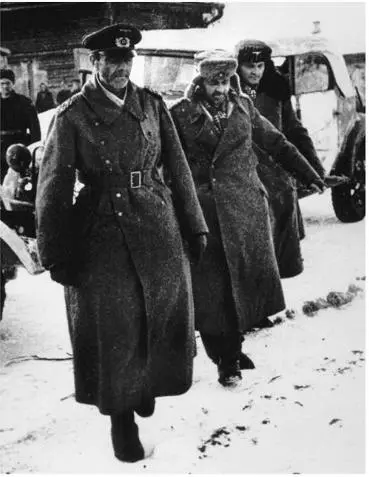
Friedrich Paulus (foreground), commander of the German 6th Army at Stalingrad, shortly after he surrendered on January 31, 1943. Hitler promoted Paulus to field marshal on the assumption that he would shoot himself to avoid capture. He did not. (Topham/The Image Works)

The major Allied leaders at the Teheran conference in late November 1943. Seated (from left): Soviet dictator Joseph Stalin; American president Franklin D. Roosevelt; and British prime minister Winston Churchill. (Topham/The Image Works)
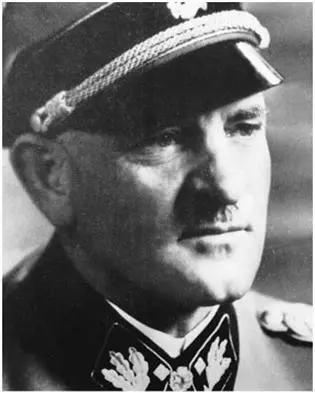
German SS General Sepp Dietrich, commander of the 6th Panzer Army in the Battle of the Bulge, December 1944. (Topham/The Image Works)
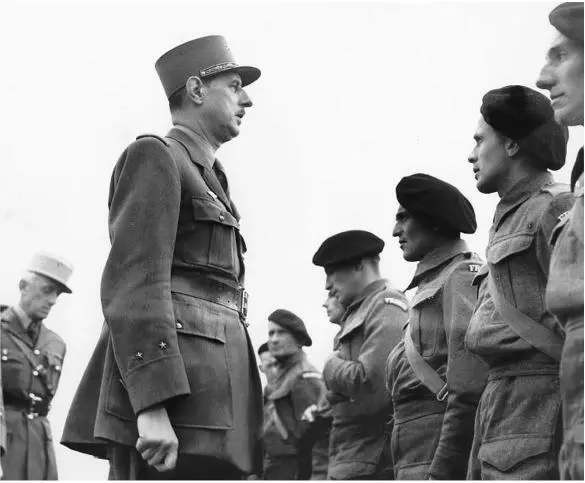
General Charles de Gaulle inspects French soldiers who escaped from German prison camps and joined the Free French movement, which de Gaulle led. De Gaulle received wild acclaim when he arrived in Paris with liberating forces on August 25, 1944. (Topham/ The Image Works)
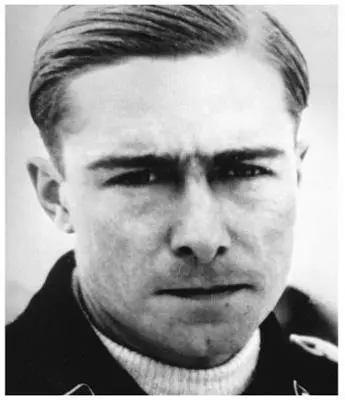
SS Lieutenant Colonel Joachim Peiper, whose battle group massacred eighty-six captured and unarmed Americans and a number of Belgians at Malmédy during the Battle of the Bulge in December 1944. (Topham/The Image Works)
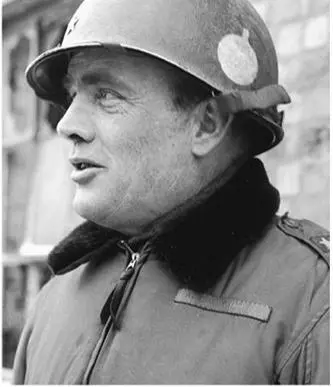
Brigadier General Anthony C. McAuliffe, who said “Nuts!” to a German demand that he surrender the American 101st Airborne Division he commanded at Bastogne during the Battle of the Bulge in December 1944. (Topham/The Image Works)
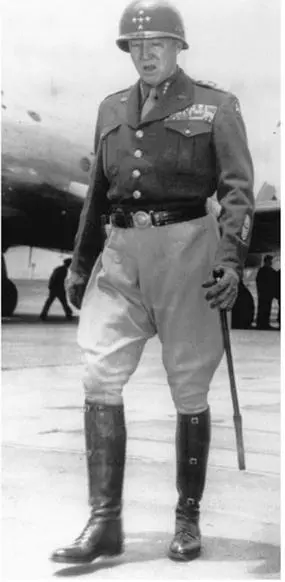
General George S. Patton Jr., the most aggressive and imaginative Allied commander in the west, who led the American 7th Army into Sicily and the 3rd Army through France after the breakout from Normandy in late July 1944. (Topham/The Image Works)

Leaders of Overlord, the invasion of Normandy in June 1944. Seated (from left): RAF Air Chief Marshal Sir Arthur Tedder, deputy commander; General Dwight D. Eisenhower, supreme commander; British field marshal Sir Bernard L. Montgomery, ground forces commander. Standing (from left): General Omar Bradley, American ground commander; Royal Navy Admiral Sir Bertram H. Ramsey, naval commander; RAF Air Chief Marshal Sir Trafford Leigh-Mallory, air support commander; and Lieutenant General Walter Bedell Smith, Eisenhower’s chief of staff. (Topham/The Image Works)
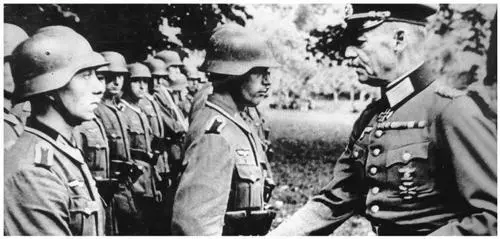
Field Marshal Gerd von Rundstedt awards Iron Cross decorations to German soldiers who distinguished themselves in combat. Rundstedt commanded Army Group A, which struck through the Ardennes in May 1940 and led quickly to the defeat of France and the eviction of the British from the Continent. Rundstedt commanded an army group in Russia and was commander in chief in the west when the Allies invaded Normandy in June 1944. (Topham/ The Image Works)
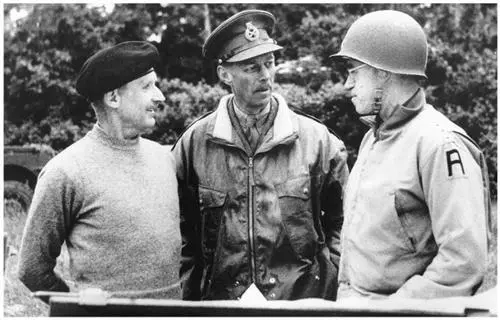
The senior Allied commanders in Normandy in June 1944 (from left): Field Marshal Bernard L. Montgomery, chief of all ground forces; General Miles C. Dempsey, commander of the British 2nd Army; and General Omar Bradley, commander of the American 1st Army. (Topham/The Image Works)
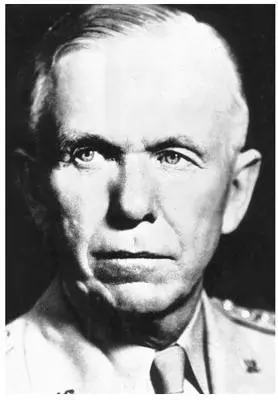
General George C. Marshall, chief of staff of the U.S. Army and President Roosevelt’s principal military adviser. Marshall was slated to become commander of the invasion of Normandy in 1944, but Roosevelt decided that he could not dispense with his advice and gave the command to Dwight D. Eisenhower. (Topham/The Image Works)
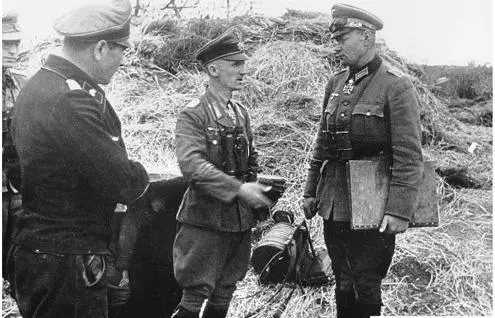
General Hasso von Manteuffel (second from right) discusses defense plans in France just prior to the Allied invasion on June 6, 1944. Manteuffel conducted a brilliant defense in Tunisia in 1943 against Allied forces and commanded the 5th Panzer Army in the Battle of the Bulge in December 1944. (AP/Wide World Photo)
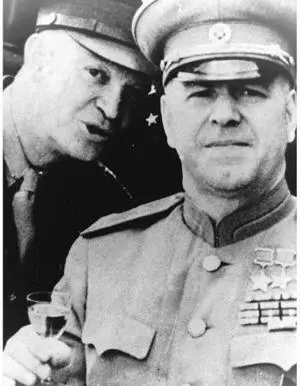
Marshal Georgy K. Zhukov, who led the Soviet drive into Germany in 1945, makes a toast at Frankfurt shortly after the German surrender. With him is American General Dwight D. Eisenhower, western Allied supreme commander. (Topham/The Image Works)
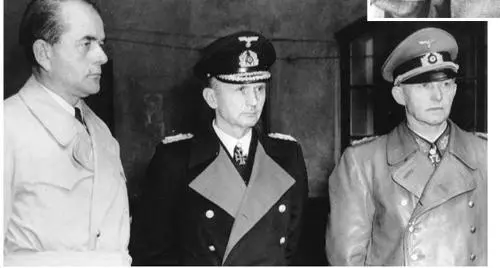
Albert Speer (left) , Nazi armaments chief; Grand Admiral Karl Dönitz (center), German U-boat chief and last chancellor of the German Reich; and General Alfred Jodl, operations chief of the high command, at their arrest at Flensburg, Germany, on May 24, 1945. (Topham/The Image Works)
Читать дальше
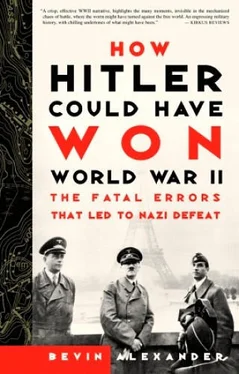
































![Джонатан Димблби - Barbarossa - How Hitler Lost the War [calibre]](/books/385421/dzhonatan-dimblbi-barbarossa-how-hitler-lost-the-w-thumb.webp)









